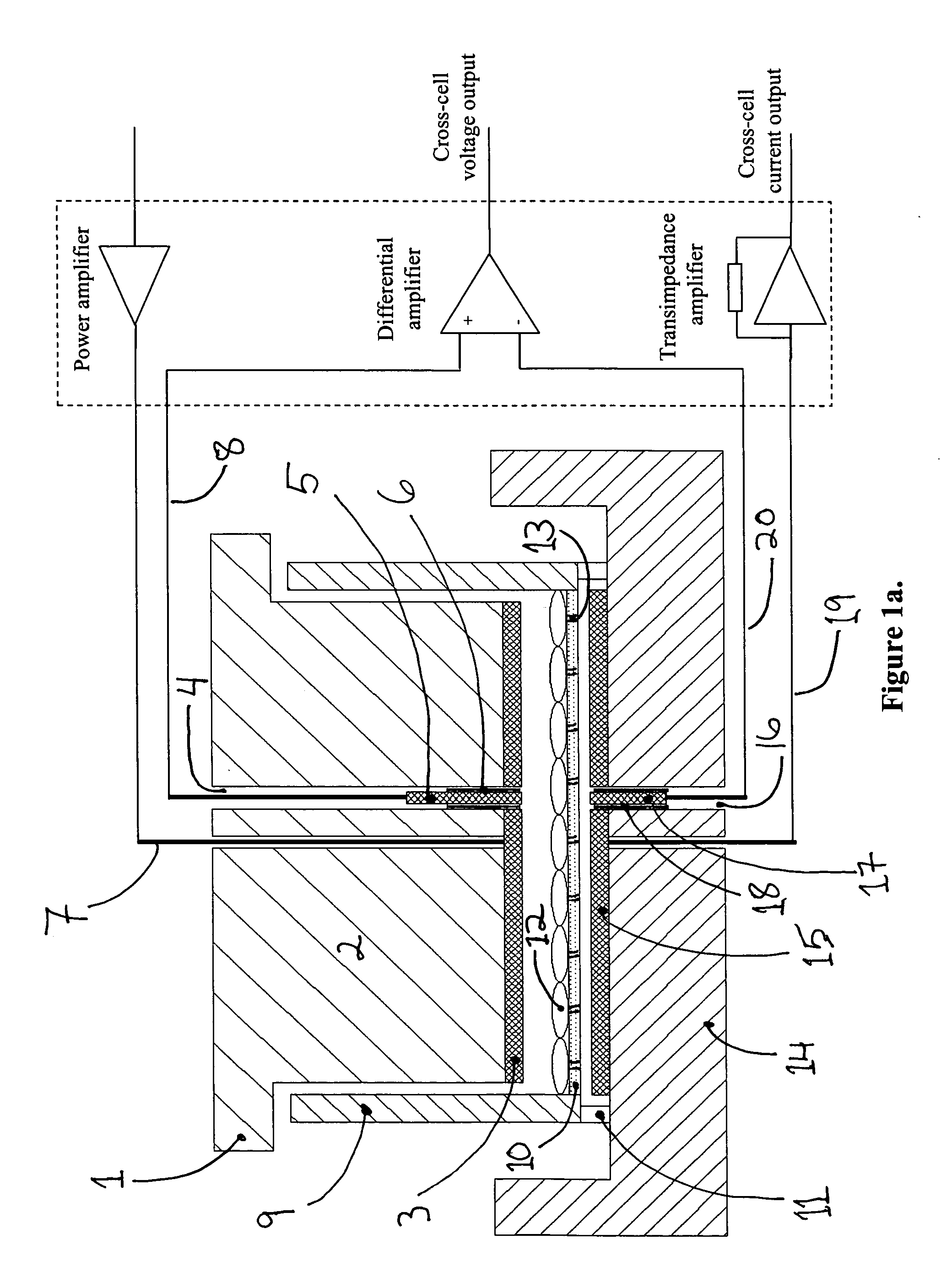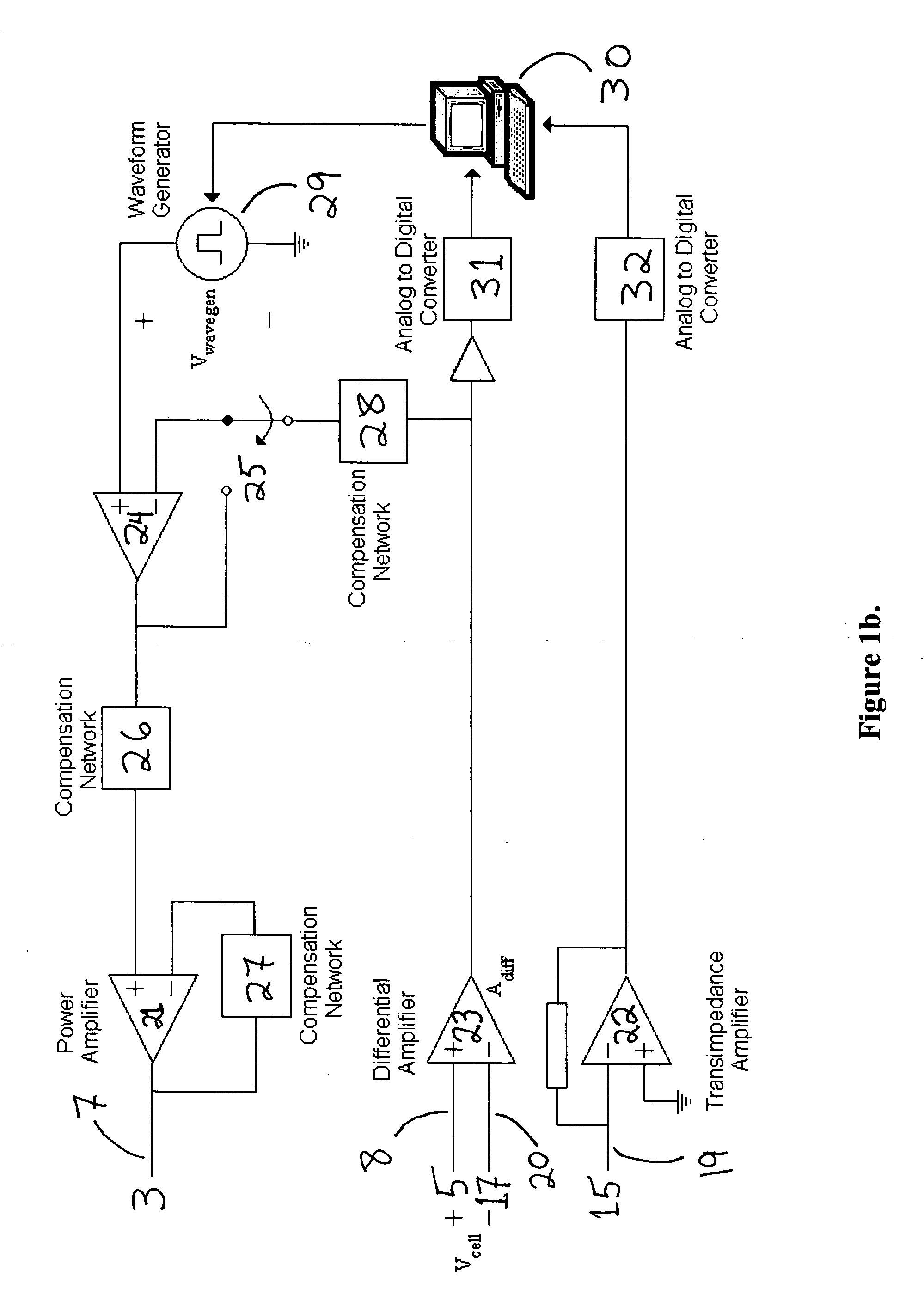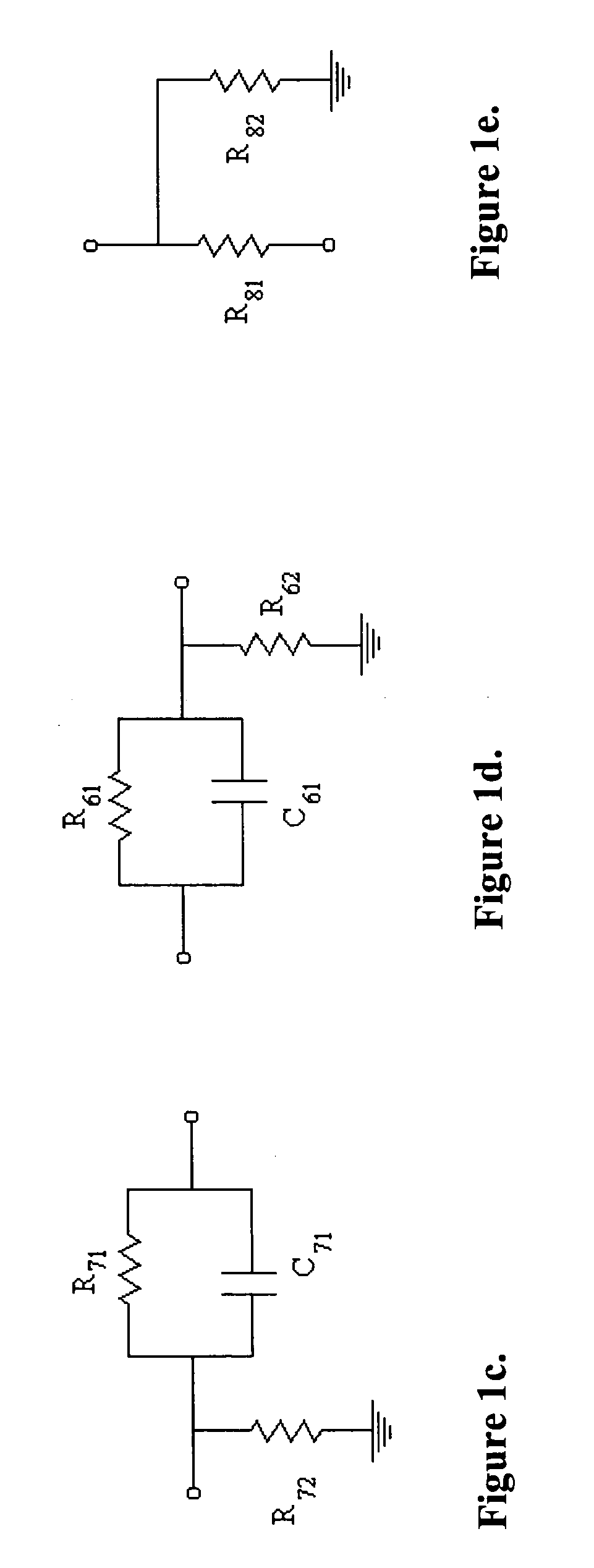Device and method for controlled electroporation and molecular delivery into cells and tissue
a technology of molecular delivery and electroporation, which is applied in the field of devices and methods for controlling electroporation and molecular delivery into cells and tissues, can solve the problems of significant cell death, low transport efficiency of tissue-derived cells and other primary cells, and low overall efficiency of traditional electroporation, etc., and achieve accurate measurement and precise control of voltage applied.
- Summary
- Abstract
- Description
- Claims
- Application Information
AI Technical Summary
Benefits of technology
Problems solved by technology
Method used
Image
Examples
Embodiment Construction
Device Configuration
[0033]FIG. 1a shows the cross-section schematic of a device as well as the electronic configuration for monitoring and controlling electroporation of cells (including but not limited to biological cells, lipid vesicles, cell cultures, cell monolayers, spheroids, biological tissue and tissue slices and any combination thereof) on porous membranes. The device consists of three parts: The top unit (1), the middle cup (9) and the bottom chamber (14). The middle cylindrical cup has a thin, non-electrically conductive and porous membrane (10). The cup rests on feet (11) to keep the membrane (10) from touching the bottom chamber (14). Alternately, a flange along the top rim of the cup (9) allows the cup to hang from a ledge built into the bottom chamber, such that the membrane (10) is separated at a desired distance from the bottom chamber (14). A top electroporation electrode (3), typically made of silver and silver chloride, is attached to the base of the top unit bo...
PUM
| Property | Measurement | Unit |
|---|---|---|
| electrical potential | aaaaa | aaaaa |
| diameters | aaaaa | aaaaa |
| diameters | aaaaa | aaaaa |
Abstract
Description
Claims
Application Information
 Login to View More
Login to View More - R&D
- Intellectual Property
- Life Sciences
- Materials
- Tech Scout
- Unparalleled Data Quality
- Higher Quality Content
- 60% Fewer Hallucinations
Browse by: Latest US Patents, China's latest patents, Technical Efficacy Thesaurus, Application Domain, Technology Topic, Popular Technical Reports.
© 2025 PatSnap. All rights reserved.Legal|Privacy policy|Modern Slavery Act Transparency Statement|Sitemap|About US| Contact US: help@patsnap.com



